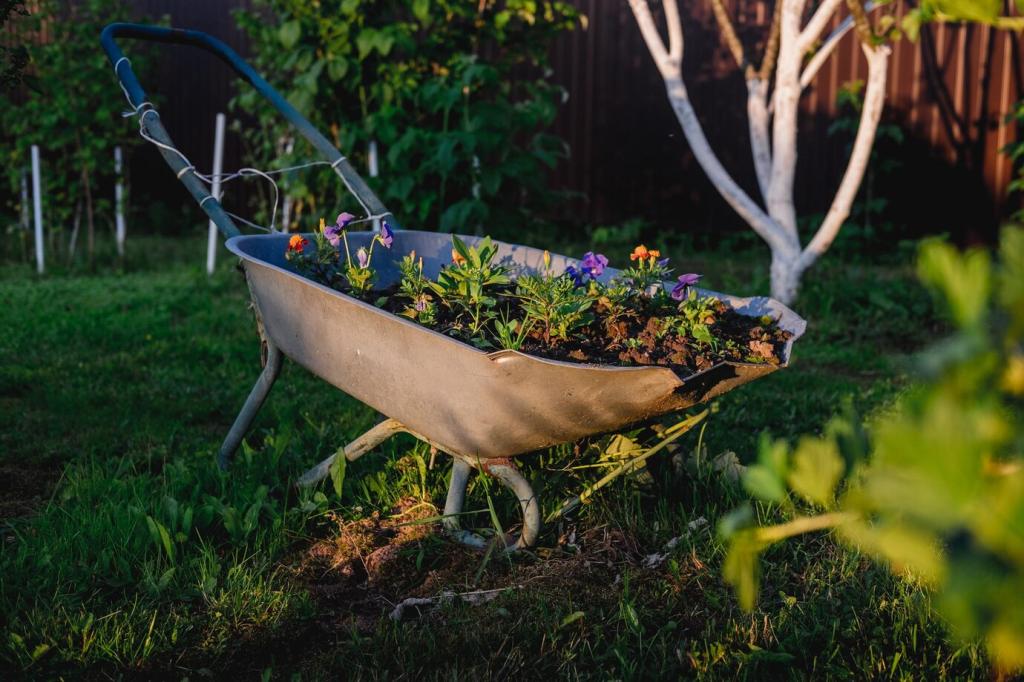Designing a Spring Awakening Garden
Chosen theme: Designing a Spring Awakening Garden. Step out of winter’s hush and choreograph the season’s first colors, fragrances, and textures with intention and delight. Share your earliest bloom memory in the comments and subscribe for our unfolding seasonal series.

Layer early bulbs beneath deciduous shrubs to catch sunlight before leaves appear, then follow with mid-spring perennials. Think crocus into daffodil into tulip into allium, guiding the eye along a gentle, painterly ribbon of bloom.

Track sunlight for a week around the equinox, noting warm pockets by south-facing walls. These microbursts of heat can awaken bulbs sooner, giving staggered bloom times and delightful surprises near paths, porches, and your daily entryway.

Mix fine, feathery grasses with glossy hellebore leaves and the bristled buds of quince. When morning light skims across them, textures sparkle, announcing spring’s arrival before color fully floods the beds and borders with brilliance.
Soil and Site: Warming the Stage
The Quick Drainage Test
Dig a small hole, fill with water, and time the drain. If it lingers, blend compost and sharp sand. Early bulbs dislike soggy roots, especially during irregular snow melt and sudden March thaws that saturate beds.
Mapping Frost Pockets
Note low spots where cold air pools at night. Plant tougher species there, and reserve delicate bloomers for slightly elevated mounds. Last March, a primrose patch sulked in a hollow; one hand’s lift revived it.
Raised Beds or In-Ground?
Raised beds warm faster and shed excess moisture, perfect for impatient gardeners and early edibles. In-ground beds offer steadier moisture. Blend both approaches to stagger awakenings and extend your garden’s early-season heartbeat and rhythm.
Start with snowdrops and crocus near entrances for daily joy, add species tulips for bright resilience, then let drums of allium carry momentum forward. Their underground patience rewards you with a faithful, low-fuss ceremony.
Plant Palette: Early Sparks That Last
Wild Guests: Designing for Pollinators and Birds
Continuity of Bloom
Stitch early, mid, and late spring flowers into a corridor of nectar: mahonia, lungwort, heather, then blueberry and native willow catkins. Consistent food brings consistent visitors, strengthening your garden’s pulse each cool, luminous morning.
Shelter, Water, and Rest
Leave a tidy but gentle mess: hollow stems, leaf litter under shrubs, a shallow water dish with pebbles for footing. Birds and bees repay kindness with pollination, pest control, and intimate moments worth sharing.
Night Shift Magic
White blooms such as narcissus ‘Thalia’, white hyacinths, and pale hellebores glow at dusk, guiding moths that stir early in the season. A discreet solar light reveals gentle night pollinator visits.


Paths, Seats, and Water: Human-Nature Flow
Lay a simple mulch or gravel path that dries quickly after frost, threading past earliest blooms. A slight curve slows you, revealing surprises—a crocus colony here, witch hazel there, fragrant hyacinths just beyond.
Paths, Seats, and Water: Human-Nature Flow
Place a bench where low sun lands first: south or southeast, sheltered from wind. A cushion stored indoors invites ritual—five minutes, hot mug, breath fogging, garden yawning awake around you daily.
Delay heavy pruning until buds clearly swell; you’ll avoid accidental cuts on late risers. Brush leaves aside by hand, not rake, where bulbs emerge. Share your findings and first bloom dates with neighbors.

